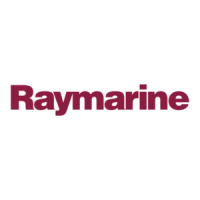Chapter 5: Standard Chart Operations 5-1
Introduction
Chapter 5: Standard Chart Operations
5.1 Introduction
This chapter explains how to navigate using the chart functions that are
available with the L755RC Plus, L760RC Plus, and L1250RC Plus Combined
Fishfinder/Chartplotter Displays. Chart functions are also available on L1250
Plus and L760 Plus fishfinder-only units, when connected to an
hsb
2
Plus
Series device with chartplotter functionality (see Section 2.7, Integrated
Systems). This chapter covers the following topics:
• Using chart cards
• Controlling waypoints, including placing, moving, editing and deleting
waypoints
• Working with routes, including creating a new route, managing routes
using the route database and editing routes
• Following routes and going to waypoints
• Transferring Waypoints and Routes
• Using tracks, including showing tracks, track set up and saving tracks
All these chart functions are available in plotter mode, so you can plot and
track routes at large scales even when a chart card is not installed.
Further functions, including measuring distances and setting alarms are
described in Chapter 6.
Safety
The chartplotter makes it very easy to place a waypoint and travel towards it.
However, you should always check first that the route is safe. If you are using
the chartplotter in combination with a SeaTalk autopilot, the autopilot will
prompt for confirmation before it steers the vessel towards the waypoint.
If you have entered your route using a small-scale chart, zoom in to a larger
scale to check for hazards, such as small shoals, that may not be shown on the
smaller scale charts.
Note: Until you are familiar with interpreting the chart display, you should
take every opportunity to compare the displayed objects with visual targets,
such as buoys and coastal structures. You should practice harbor and coastal
navigation during daylight and in clear weather conditions.

